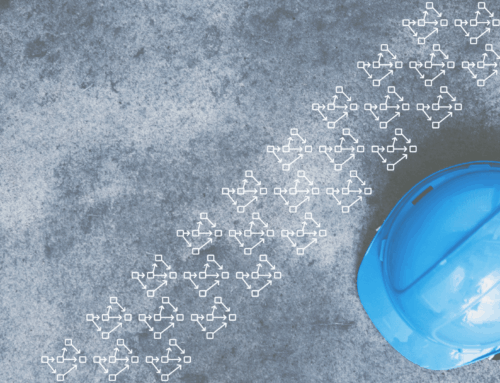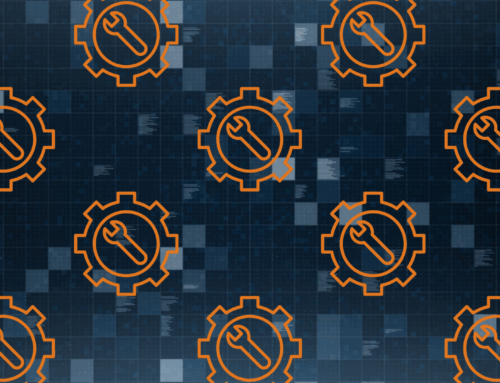There’s a hidden enemy in industrial operations: poorly named historian tags. What seems like a trivial detail can quickly snowball into a monstrous headache when you’re juggling thousands or even hundreds of thousands of tag names. Imagine deciphering an ancient language while racing to keep your equipment running smoothly – that can be the case for industrial organizations with subpar tag naming conventions.
But fear not! Just as you carefully choose a name for your child, your boat, or even your beloved pet, it’s time to give your data tags the thoughtful consideration they deserve. We have created some guidelines to follow for creating tag names so that you can rest assured you have your historian tag name house in order. Your future self (and your entire team) will thank you for taking this crucial step on your digital transformation journey.
Structure
Create a system-wide structure that all levels of the organization follow. Consistency is key. Each piece of equipment, each system, and each site should follow the same naming structure. Different departments might oversee different assets and not have significant crossover now, but that does not mean that is how it always will be. The same naming convention will make current and future collaboration much easier across the entire organization.
Pro tip: create naming convention standards and document them. Do not assume the convention is self-explanatory. Documentation always makes it easier for others to follow in different departments or the future.
Legacy Data Historian Tag Names
Most of you probably have existing tag names. Do not let legacy or inherited tag names keep you from updating the tag naming convention. In addition, as sensors continue to decrease in price and more sensors are included in new OEM equipment, you will see an increase in the number of tags. Take the time now to create a naming convention that makes sense for big data and IIoT (Industrial Internet of Things). Your future self and future colleagues will thank you. Remember: consistency, consistency, consistency.
Character Minimums and Maximums
There is not an ideal number of characters for tag names. It depends on how your organization wants to use the tag name and description fields. For us, we see some quick fixes:
- You do not have to spell everything out. For example, a bearing can be shortened to brg or brng. Temperature can be shortened to tmp or temp. The software typically will accept long tag names, but the viewing field is limited. Try to drop unnecessary letters so you can see more information at once without having to scroll or hover over the name.
- Do not go overboard with shortening unless everyone is on the same page, and you have a key for others to decipher the meaning. For example, you could shorten bearing temperature to BT. But will BT be confused for a boiler tube in a week, a month, or a year?
- Tag names should not be longer than the description. The description provides no added value when the name is longer than the description. Consider shortening the tag name and providing the details in the description.
Pro tip: You have already created a tag naming convention document to share with the entire organization. Include a key of acceptable abbreviations and acronyms. This will be helpful as a reminder for yourself, for new hires, and for third parties that work with you.
Limit Number Usage
A tag ID is different from a tag name. Software may have no issue with finding a tag with numbers, but the average human will not recollect what numbers mean in terms of the process. Tag names should be meaningful and easily identifiable for all members of your organization. For example, CS2 means chilling station 2. 3422, on the other hand, would be hard to decipher quickly and easily.
Conflicting Historian Tag Names Information
This may seem obvious, but we have run across quite a few tag names that do not match the description. Make sure there is no conflicting information in the tag name or description and that the tag name and description match. Having to go back and figure out which one is the right one is frustrating and decreases productivity.
Pro tip: emphasize the importance of quality tag names and having a specific person to whom people can report problematic tag names to. As people use the system, they can help improve the quality and check for conflicting information.
Hierarchy
When monitoring, you care about the asset, not just the individual tag. When creating a tag naming convention, keep the asset in mind. If the asset the tag name belongs to is not easily identifiable, it will make your work harder. Similarly, the site or plant should be easily identifiable. This can be done by adding a prefix at the beginning. For example, all tags at the HanAra Power Plant would begin with HPP_, while the Far West Plant would begin with FWP_.
Software
The tools you use to manage, analyze, and visualize tags should be able to handle tag name changes. Ask your software vendors how they create the tag database and how easy it is to change the tag naming convention. Being required to have two tags in the same database that are the same except one is the old naming convention and the other is not a helpful solution. Do not let software vendors tell you differently!
How HanAra Helps: Data Historian Management
At HanAra, we’re committed to simplifying complex processes, and tag naming is no exception. We hope this data historian management guide has helped you create a robust and reliable tag naming convention that your entire organization will appreciate.
Imagine a future where your entire organization navigates your data historian with ease, where collaboration flows seamlessly across departments, and where you can instantly access the exact information you need. That future is within reach.
And we understand that implementing these changes can sometimes feel daunting. That’s why our team of solution experts is ready to support you every step of the way. Whether you need personalized guidance, advanced solutions, or just a sounding board for your ideas, we’re here to help you break through the limitations.






